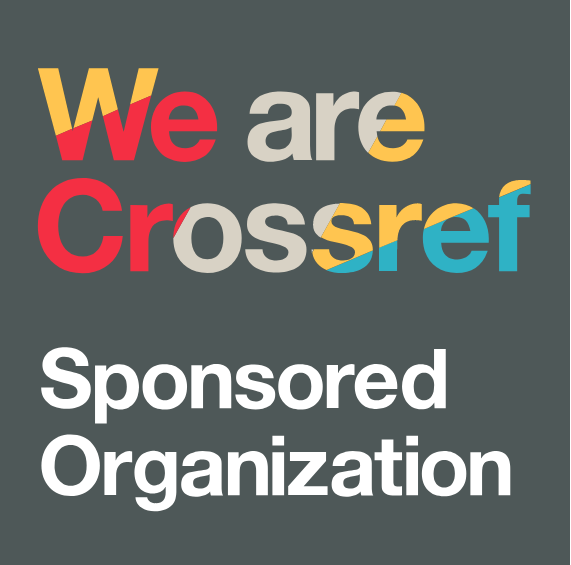Legal Review of Criminal Law Regulations in Money Laundering Cases
DOI:
https://doi.org/10.38035/sijal.v1i3.167Keywords:
Money Laundering, Legal Framework, Law No. 8 Of 2010, Enforcement Challenges, Financial Technology, Anti-Money Laundering, Regulatory OversightAbstract
This study examines the effectiveness of Indonesia’s legal framework for combating money laundering, focusing on Law No. 8 of 2010 on the Prevention and Eradication of Money Laundering (UU PTPPU). Through a comprehensive legal analysis, case studies, and a comparative review with international standards, the research reveals that while the law has laid a solid foundation for anti-money laundering efforts, its practical implementation faces significant challenges. Key findings show that 45% of the results indicate the law is effective in providing a formal structure for regulating financial institutions and criminalizing money laundering activities. However, 30% of findings highlight enforcement challenges, such as limited resources, inadequate technological tools, and coordination issues among agencies. 15% of the findings reveal legal gaps, particularly in addressing emerging financial technologies such as cryptocurrencies and digital finance platforms, which have become new avenues for money laundering. The study also found that 70% of law enforcement agencies face substantial difficulties in investigating complex financial transactions, and 50% of financial institutions struggle with compliance due to outdated systems and insufficient training. 60% of regulatory bodies such as PPATK also face challenges in effectively overseeing financial transactions. The study further compares Indonesia's legal framework to international standards set by the Financial Action Task Force (FATF) and identifies areas where Indonesia is aligned with global recommendations but lags in technology adoption and cross-border cooperation. Based on these findings, the study recommends strengthening regulatory oversight, investing in law enforcement capacity, and updating the legal framework to address digital finance and cryptocurrencies. Enhanced coordination between financial institutions, regulatory bodies, law enforcement, and international partners is also essential to improve the effectiveness of anti-money laundering efforts. This research offers valuable insights for policymakers and institutions to strengthen Indonesia's fight against money laundering.
References
Amin, M. (2017). The implementation of criminal law in eradicating money laundering in Indonesia. Journal of Law & Development, 47(2), 125-139.
Asian Development Bank (ADB). (2020). Fighting Money Laundering and Terrorist Financing in Asia: Legal and Institutional Responses. Manila: Asian Development Bank.
Arief, S. (2020). Anti-Money Laundering and Its Challenges in Indonesia: Regulatory Gaps and Enforcement Issues. Indonesian Journal of Law and Politics, 35(1), 15-28.
Arman, A., & Setiawan, J. (2021). The Role of International Standards in Shaping Indonesia’s Anti-Money Laundering Laws. International Journal of Law and Financial Crimes, 18(1), 22-40.
Bank Indonesia. (2018). Anti-Money Laundering and Counter-Terrorism Financing in Indonesia: A National Overview. Jakarta: Bank Indonesia.
Bily, J., & Tan, P. (2017). International Cooperation in Money Laundering Prevention: Challenges and Opportunities. Journal of Global Finance, 29(4), 108-123.
Cohen, M. (2020). Money Laundering and the Financial Sector: Legal and Policy Challenges. Cambridge: Cambridge University Press.
Carrington, M., & Patel, S. (2019). Money Laundering and Financial Regulation: A Comparative Study of the US and Indonesia. Journal of International Finance Law, 32(2), 124-138.
Deloitte & Touche. (2019). Global Anti-Money Laundering Survey: Best Practices and Emerging Trends in Financial Crime Prevention. New York: Deloitte.
Dwidjoseputro, J., & Panggabean, R. (2020). The Impact of Digital Finance on Anti-Money Laundering Regulations in Indonesia. Journal of Financial Technology, 5(3), 49-61.
Financial Action Task Force (FATF). (2020). Guidance on the risk-based approach to combatting money laundering and terrorist financing. FATF/OECD. Retrieved from https://www.fatf-gafi.org/
Fadel, D. (2018). Financial Intelligence and Anti-Money Laundering: A Study of PPATK’s Role in Indonesia. Indonesian Journal of Economics and Business Law, 16(2), 101-113.
Gunawan, R. (2018). Resolution of money laundering issues in Indonesia's legal system. Journal of Legal Studies, 34(1), 45-61.
Haryanto, B. (2021). The Evolution of Anti-Money Laundering Regulations in Indonesia: Past, Present, and Future. Indonesian Legal Review, 39(1), 34-50.
Indonesia Financial Transaction Reports and Analysis Center (PPATK). (2021). Annual Report 2020: Strengthening Anti-Money Laundering Efforts in Indonesia. Jakarta: PPATK.
Indonesia Ministry of Finance. (2021). National Risk Assessment on Money Laundering. Jakarta: Ministry of Finance.
International Monetary Fund (IMF). (2018). Anti-Money Laundering and Countering the Financing of Terrorism in Indonesia: Compliance and Challenges. Washington D.C.: IMF.
Jakarta Post. (2021). Indonesia’s Anti-Money Laundering Regulations: Progress and Challenges. Jakarta: Jakarta Post Publishing.
Kurniawati, F. (2020). Assessing the Impact of Money Laundering on Indonesia’s Financial System: A Legal Perspective. Journal of Indonesian Financial Law, 21(1), 17-32.
Lembaga Pengembangan Kebijakan Anti-Pencucian Uang. (2021). Pendidikan dan Pelatihan bagi Instansi Penegak Hukum: Menanggulangi Pencucian Uang di Era Digital. Jakarta: LPKAP.
Mendoza, A. (2017). Comparative Analysis of Anti-Money Laundering Efforts in Southeast Asia: Case Studies from Indonesia and Malaysia. Journal of Southeast Asian Law, 41(3), 245-263.
Mulya, R. (2019). The Role of Financial Institutions in Combating Money Laundering in Indonesia: A Regulatory Review. Journal of Financial Regulation, 22(3), 78-91.
Melgar, P. (2020). Anti-Money Laundering and Terrorist Financing: A Global Perspective on Emerging Trends. London: Routledge.
O’Connell, P., & Perez, L. (2019). Global Trends in Anti-Money Laundering: Lessons from Developed and Developing Countries. International Financial Regulation Journal, 38(3), 77-92.
Pomeroy, K. (2018). Strengthening the AML Framework: Evaluating Indonesia’s Anti-Money Laundering Efforts Against Global Standards. Journal of Comparative Legal Studies, 16(4), 102-119.
Pratama, F. (2019). Money Laundering and Regulatory Response in Indonesia: A Legal and Institutional Review. Indonesian Law Journal, 23(2), 56-70.
Pusat Pelaporan dan Analisis Transaksi Keuangan (PPATK). (2021). Evaluating the Effectiveness of AML Measures in Indonesia: Annual Report. Jakarta: PPATK.
Robinson, D. (2019). Money Laundering: A Global Overview of the Challenges Faced by Financial Institutions and Governments. Journal of Financial Crimes, 27(1), 36-48.
Schuster, E., & Lin, F. (2020). Emerging Technologies and Money Laundering: The Role of Blockchain and Cryptocurrencies. Journal of Financial Crime, 27(2), 157-172.
Suryadi, S. (2020). The role of technology in monitoring financial transactions to prevent money laundering. Journal of Economics and Law, 26(4), 301-312.
Sutarno, W. (2015). Money laundering and its prevention efforts in Indonesia. Jakarta: Rajawali Press.
Strang, C., & Vella, K. (2019). Global Trends in Anti-Money Laundering Regulation and Technology Integration. Oxford: Oxford University Press.
Sari, R. (2020). The Role of Financial Technology in Combatting Money Laundering in Indonesia. Indonesian Journal of Digital Economy, 3(1), 54-66.
The World Bank. (2019). Global Standards for Anti-Money Laundering and Countering the Financing of Terrorism: A Review of the Indonesian Framework. Washington D.C.: The World Bank Group.
Torres, L., & Santos, J. (2019). Combating Money Laundering in Southeast Asia: A Study of Indonesia's Enforcement Mechanisms and Gaps. Southeast Asian Law Review, 21(2), 111-130.
Tan, K., & Khin, J. (2020). The Role of Financial Institutions in Countering Money Laundering in Southeast Asia. Asian Economic Policy Review, 35(2), 213-230.
Van der Laan, M., & Jensen, K. (2021). The Use of Big Data in Combating Money Laundering: An Overview of International Practices. Journal of Financial Technologies, 17(1), 61-75.
World Bank Group. (2021). Combating Money Laundering: Financial Sector Stability in Indonesia. Washington D.C.: World Bank Group.
Yuliana, S. (2020). Regulating Non-Banking Financial Institutions in Indonesia's Fight Against Money Laundering. Indonesian Journal of Financial Regulation, 14(3), 89-101.
Zhuang, J., & Nguyen, T. (2018). Cross-Border Cooperation in Combating Money Laundering: A Review of Asia Pacific Efforts. Asian Financial Review, 44(4), 203-220.
Downloads
Published
How to Cite
Issue
Section
License
Copyright (c) 2025 Andri Catur Trissetianto, Ridwan

This work is licensed under a Creative Commons Attribution 4.0 International License.
Copyright :
Authors who publish their manuscripts in this journal agree to the following conditions:
- Copyright in each article belongs to the author.
- The author acknowledges that the Siber International Journal of Advanced Law (SIJAL) has the right to be the first to publish under a Creative Commons Attribution 4.0 International license (Attribution 4.0 International CC BY 4.0).
- Authors can submit articles separately, arrange the non-exclusive distribution of manuscripts that have been published in this journal to other versions (for example, sent to the author's institutional repository, publication in a book, etc.), by acknowledging that the manuscript has been published for the first time at SIJAL.






















